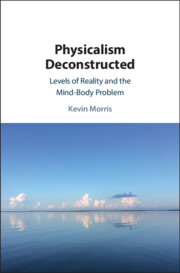Book contents
- Physicalism Deconstructed
- Physicalism Deconstructed
- Copyright page
- Contents
- Figures
- Acknowledgments
- Introduction
- Chapter 1 Supervenience and Nonreductive Physicalism
- Chapter 2 Nonreductive Physicalism and the Exclusion Problem
- Chapter 3 Functional Realization
- Chapter 4 Subset Realization
- Chapter 5 Grounding and Physicalism
- Chapter 6 The Rise of Nonreductive Physicalism
- Chapter 7 The Physicalist Problematic Reconsidered
- Conclusion
- References
- Index
- References
References
Published online by Cambridge University Press: 30 November 2018
- Physicalism Deconstructed
- Physicalism Deconstructed
- Copyright page
- Contents
- Figures
- Acknowledgments
- Introduction
- Chapter 1 Supervenience and Nonreductive Physicalism
- Chapter 2 Nonreductive Physicalism and the Exclusion Problem
- Chapter 3 Functional Realization
- Chapter 4 Subset Realization
- Chapter 5 Grounding and Physicalism
- Chapter 6 The Rise of Nonreductive Physicalism
- Chapter 7 The Physicalist Problematic Reconsidered
- Conclusion
- References
- Index
- References
- Type
- Chapter
- Information
- Physicalism DeconstructedLevels of Reality and the Mind–Body Problem, pp. 249 - 260Publisher: Cambridge University PressPrint publication year: 2018



